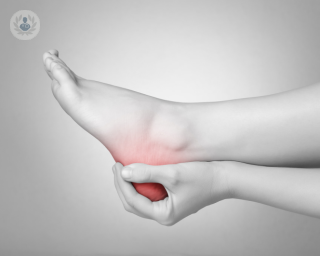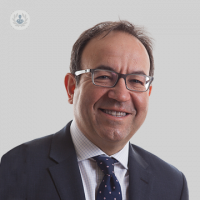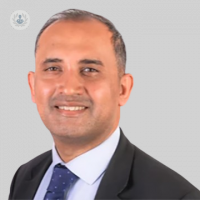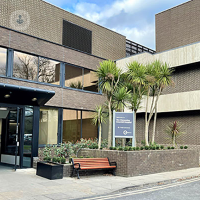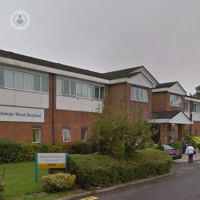Foot
Mr Jasdeep Giddie - Orthopaedic surgery
Created on: 11-13-2012
Updated on: 10-16-2023
Edited by: Aoife Maguire
The foot is a complex structure consisting in dozens of bones, joints, muscles, ligaments, and over a hundred tendons. Properly functioning feet are essential to walking and standing unaided.
Our feet must fulfil four basic functions:
- act as a rigid lever to create the propulsive force needed for walking
- transfer the rotational forces produced by the hip
- adapt to uneven surfaces
- absorb impact against the ground
To fulfil these functions, the muscles and tendons must work together with bones, ligaments and joints. If one of these components does not function properly, all others will be affected.

Pathologies that the foot may suffer
Because the human foot has so many parts, over time we have distinguished a wide range of pathologies related to the foot. Some of the most common conditions affecting the foot include:
- Ankle and heel problems – plantar fascitis, heel spur, Achilles tendinopathy, Sever’s disease, Haglund's disease
- Problems with the structure of the foot – cavus foot, flat foot, club foot
- Toe problems – bunions, ingrown toenail, hammer toe, claw toe, corns
- Problems on the bottom of the foot – Morton’s neuroma, plantar warts, metatarsalgia, stress fracture
- Problems that can affect anywhere on the foot, such as rheumatoid arthritis
Treatments for foot pathologies
Soft tissue injuries and pathologies can sometimes be treated with anti-inflammatory medication, physiotherapy, or extracorporeal shockwave therapy
Foot surgery may sometimes recommended for hammer toe, claw toe, bunions, structural foot problems, or neurological problems. In addition to open surgery, new techniques such as percutaneous foot surgery have been developed in recent years involving smaller incisions and fewer post-surgical complications.
Specialist who treats foot pathologies
Podiatrists specialise in the examination, assessment, and treatment of foot problems. If you see your GP about a foot problem and they are unable to make a diagnosis themselves they are likely to refer you to a podiatrist. In the UK podiatrists are also known as chiropodists.
Depending on the treatment recommended, you may also see a physiotherapist, radiologist, or orthopaedic surgeon.



